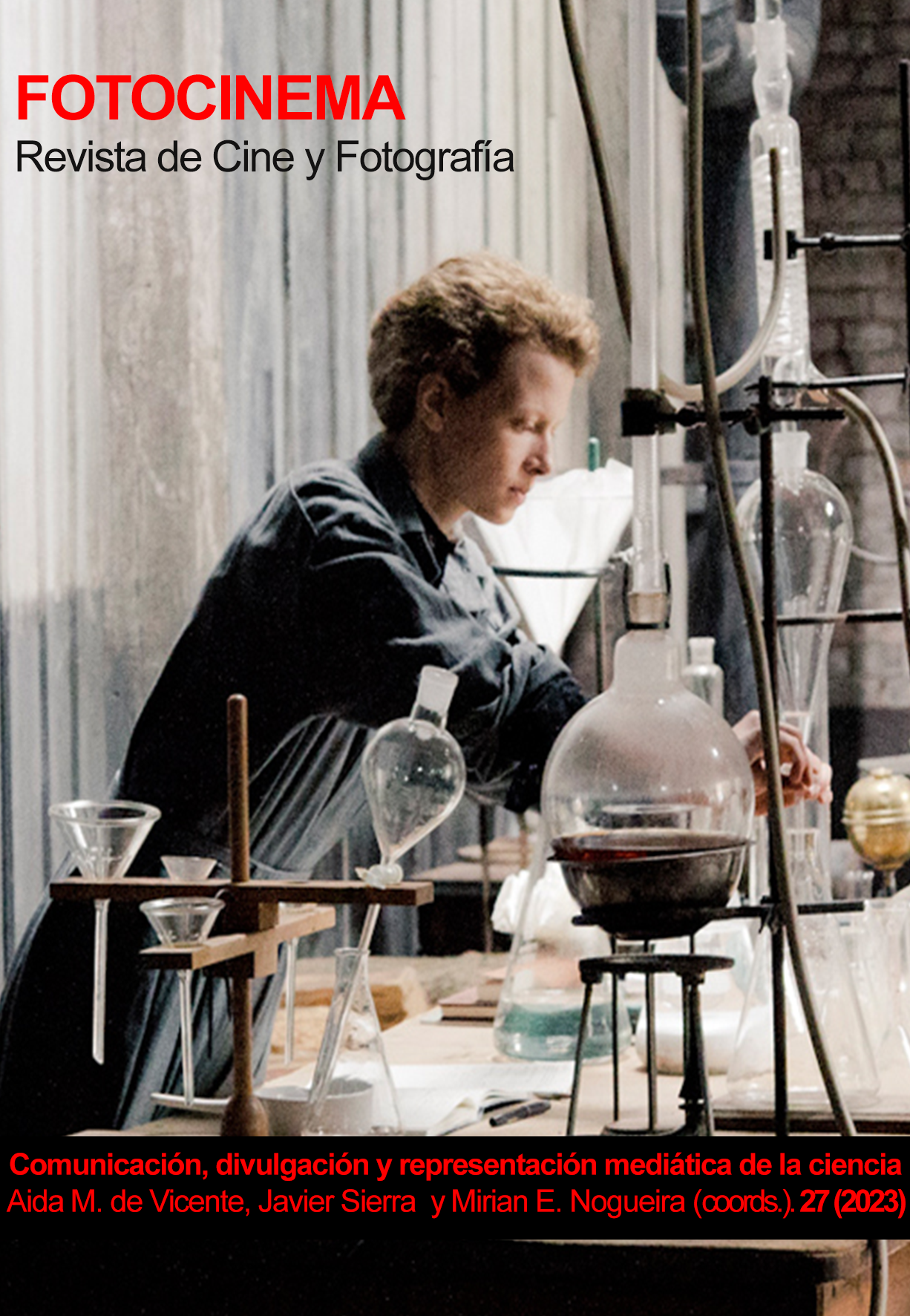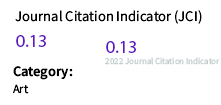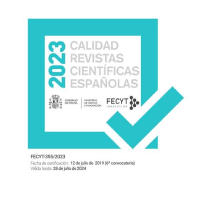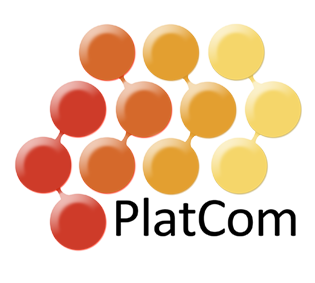Dissemination and representation of scientific audiovisual content on TikTok social network
DOI:
https://doi.org/10.24310/Fotocinema.2023.vi27.16334Keywords:
Social Networks, TikTok, Scientific Contents, Video, Experiments, YouthsAbstract
This article proposes an analysis of the videos with scientific content that are disseminated on the TikTok social network. The research has as its General Objective to carry out one of the first outlooks of the dissemination and representation of scientific content in a social network whose audience is mostly young. For this, it is proposed an analysis of the origin of the images, the theme and duration of these videos, the level of interaction, and the type of users who disseminate these contents. The research compiles a sample of the 300 most popular scientific-themed videos. The sample videos accumulated 936 million views and were uploaded by a total of 182 creators. In the research, we detected that the prototypical scientific video on TikTok mostly uses images recorded by the creators, with an average duration of 1 minute and 54 seconds, with a theme based on scientific experiments, and with a low interaction rate (although it is more remarkable in likes versus comments). In addition, it is detected that there is no concentration on the part of the creators when the application rewards the content against its origin.
Downloads
Metrics
References
Álvarez, E., Heredia, H. y Romero, M.F. (2019). La Generación Z y las Redes Sociales. Una visión desde los adolescentes en España. Revista Espacios, 40 (20), 1-13.
AIMC (2022). Marco general de los medios en España. https://ipmark.com/wp-content/uploads/Marco-General-de-los-Medios-en-Espana-2022AIMC.pdf
Basch, C. H., Mohlman, J., Fera, J., Tang, H., Pellicane, A. & Basch, C. E. (2021). Community mitigation of covid-19 and portrayal of testing on tiktok: Descriptive study. jmir Public Health and Surveillance, 7(6), 1–7. https://doi.org/10.2196/29528
Blanco, S. & Palomo, B. (2021). Rigor periodístico y regularidad como claves del éxito de los periodistas españoles en YouTube. Estudios sobre el Mensaje Periodístico, 27(4), 1043-1051. https://doi.org/10.5209/esmp.78143
Brewster, J., Arvanitis, L., Pavilonis, V. & Wang, M. (2022). Beware the ‘New Google:’ TikTok’s Search Engine Pumps Toxic Misinformation To Its Young Users. NewsGuard, September 11. https://www.newsguardtech.com/misinformation-monitor/september-2022/
ByteDance, “2021 Tik Tok Knowledge Content Data Report,” Cyberspace Administration of China, Oct. 2021. [Online]. http://news.xhby.net/tuijian/202110/t20211013_726 5103.shtml
Cambronero-Saiz, B., Segarra-Saavedra, J., & Cristófol-Rodríguez, C. (2021). Análisis desde la perspectiva de género del engagement de los principales youtubers de divulgación científica=Analysis of the engagement of the main popular science youtubers from a gender perspective. Cuestiones De género: De La Igualdad Y La Diferencia, (16), 511–525. https://doi.org/10.18002/cg.v0i16.6914
Cervi, L. (2021). Tik Tok and generation Z. Theatre, dance and performance training, 12(2), 198-204. https://doi.org/10.1080/19443927.2021.1915617
Chan, A. K., Nickson, C.P., Rudolph, J. W., Lee, A., & Joynt, G.M. (2020). Social media for rapid knowledge dissemination: early experience from the COVID-19 pandemic. Anaesthesia, 75(12), 1579-1582.
Chomón-Serna, J. M., & Busto-Salinas, L. (2018). Ciencia y transmedia: binomio para la divulgación científica. El caso de Atapuerca. Profesional de la información (EPI), 27(4), 938-946.
Cruzado Bautista, K. M. (2022). Usos y gratificaciones de la divulgación científica en Tiktok en Perú–Caso: @ AdrianCiencia. [Tesis de Universidad Peruana de Ciencias Aplicadas (UPC)] http://hdl.handle.net/10757/661236
Campos, A. (2022). Comunicación efectiva de la ciencia: ¿qué es y cómo ayuda a los científicos a mejorar su carrera y cumplir objetivos de impacto social? Revisión de la literatura. Hipertext.net, (24), 23-39.
Epsilon Technologies (2020). Tendencias y Rankings de top marcas en TikTok España. https://bit.ly/3aKxWMq
Escamilla-Fajardo, P., Alguacil, M., & López-Carril, S. (2021). Incorporating TikTok in higher education: Pedagogical perspectives from a corporal expression sport sciences course. Journal of Hospitality, Leisure, Sport & Tourism Education, 28, 100302. https://doi.org/10.1016/j.jhlste.2021.100302
FECYT (2021). Encuesta de percepción social de la ciencia y tecnología 2020. Informe de resultados. Instituto de Investigaciones de Mercado y Marketing Estratégico Ikerfel. https://tinyurl.com/2p9y4a8f
Galeano, S. (2022). Cuáles son las redes sociales con más usuarios del mundo (2022). Marketing 4 ecommerce, [Online]. https://marketing4ecommerce.net/cuales-redessociales-con-mas-usuarios-mundo-ranking/
Gallardo Camacho, J. & Jorge-Alonso, A. (2010). La baja interacción del espectador de vídeos en internet: caso YouTube España. Revista Latina de Comunicación Social, 65, 421-435. http://doi.org/c7czw2
Gallardo Camacho, J. & Maganto-Pérez, A. (2022). La presencia de contenidos de la televisión tradicional en España en la red social TikTok. UCJC Business and Society Review, vol. 19, n. 75, pp. 18-61. https://www.doi.org/10.3232/UBR.2022.V19.N4.01
García Jiménez, A., López de Ayala-López, M., & Catalina-García, B. (2013). The influence of social networks on the adolescents online practices. [Hábitos de uso en Internet y en las redes sociales de los adolescentes españoles]. Comunicar, 41, 195-204. https://doi.org/10.3916/C41-2013-19
GWI (2023). GlobalWebIndex’s quarterly report on the latest trends in social networking. https://www.gwi.com/
Hayes, C., Stott, K., Lamb, K. J., & Hurst, G. A. (2020). “Making Every Second Count”: Utilizing TikTok and Systems Thinking to Facilitate Scientific Public Engagement and Contextualization of Chemistry at Home. Journal of Chemical Education, 97(10), 3858–3866. https://doi.org/10.1021/acs.jchemed.0c00511
Hoi?, M. (2022). Using TikTok as a platform for science communication: the latest challenges and opportunities. PUBMET, 62. https://doi.org/10.15291/pubmet.3946
Holsti, O. R. (1969). Content Analysis for the Social Sciences and Humanities. Longman Higher Education. ISBN: 0201029405.
Huber, B., Lepenies, R., Quesada Baena, L., & Allgaier, J. (2022). Beyond Individualized Responsibility Attributions? How Eco Influencers Communicate Sustainability on TikTok. Environmental Communication, 16(6), 713-722. https://doi.org/10.1080/17524032.2022.2131868
IAB Spain (2022). Estudio Anual Redes Sociales 2022. https://iabspain.es/estudio/estudio-de-redes-sociales-2022/
Iqbal, Mansoor (2023). Tiktok revenue and usage statistics (2023). Business of apps. https://www.businessofapps.com/data/tik-tok-statistics/
Jiménez Rolland, M., & Gensollen, M. (2022). Ciencia ciudadana: pluralidad científica y pensamiento crítico. CIENCIA Ergo-Sum, 29(2). https://www.doi.org/10.30878/ces.v29n2a6
Juhasz, A. (2009). Learning the five lessons of YouTube: After trying to teach there, I don't believe the hype. Cinema Journal, 48(2), 145-150.
Kolsquare (enero 2022). REDES SOCIALES. Estadísticas de TikTok que tienes que conocer en 2022. https://www.kolsquare.com/es/blog/estadisticas-de-tiktok-que-tienes-que-conocer-en-2022/
Korda, H., & Itani, Z. (2013). Harnessing social media for health promotion and behavior change. Health promotion practice, 14(1), 15-23. https://www.doi.org/10.0.4.153/1524839911405850
La Tercera (Ed.) (2021, September 27). TikTok alcanza los 1000 millones de usuarios. Qué pasa. https://bit.ly/31YF9Xo
López-Navarrete, A.J.; Cabrera-Méndez, M.; Díez-Somavilla, R. & Calduch-Losa, Á. (2021). Fórmula para medir el engagement del espectador en YouTube: investigación exploratoria sobre los principales youtubers españoles. Revista Mediterránea de Comunicación/Mediterranean Journal of Communication, 12(2), 143-156. https://www.doi.org/10.14198/MEDCOM000013
Losada-Díaz, J.C., Zamora-Medina, R., & Martínez-Martínez, H. (2021). El discurso del odio en Instagram durante las Elecciones Generales 2019 en España. Revista Mediterránea de Comunicación, 12(2), 195-208. https://doi.org/10.14198/MEDCOM.19142
Martin Neira, J. I., Trillo-Domínguez, M., & Olvera-Lobo, M.-D. (2023). De la televisión a TikTok: Nuevos formatos audiovisuales para comunicar ciencia. Comunicación y Sociedad, 1-27. https://doi.org/10.32870/cys.v2023.8441
Martínez Sanz, R., Buitrago, Á., & Martín García, A. (2023). Comunicación para la salud a través de TikTok. Estudio de influencers de temática farmacéutica y conexión con su audiencia. Revista Mediterránea de Comunicación. 14 (1), 83-98. https://doi.org/10.14198/MEDCOM.23435
Misiego, M. (2022) Guía De TIKTOK y Trucos De TIKTOK: todo lo que necesitas saber. Marco Misiego. https://marcomisiego.com/
Morning Consult (2020) Fastest growing brands 2020. https://morningconsult.com/fastest-growing-brands-2020/#:~:text=The%20Fastest%20Growing%20Brands%20by%20Name%20Identification,Light%20Seltzer%2C%20and%20Warby%20Parker.
Observatorio.digital (2020) TikTok, La Revolución Social De 2020. Observatorio.Digital https://observatorio.digital/blog/tiktok-datos/
Pérez Zúñiga, R., Mercado Lozano, P., Martínez García, M., Mena Hernández, E., & Partida Ibarra, J. Á. (2018). La sociedad del conocimiento y la sociedad de la información como la piedra angular en la innovación tecnológica educativa. RIDE. Revista Iberoamericana para la Investigación y el Desarrollo Educativo, 8(16), 847-870. https://doi.org/10.23913/ride.v8i16.371
Roig-Vila, R., Mondéjar, L., & Lorenzo Lledó, G. (2015). Redes sociales científicas. La Web social al servicio de la investigación. IJERI: International Journal of Educational Research and Innovation, (5), 170–183. https://www.upo.es/revistas/index.php/IJERI/article/view/1615
Sánchez-Castillo, S., y Mercado-Sáez, M.T. (2021). Sufro una grave enfermedad rara. Reto a cantar y hacer coreografías en TikTok. Profesional de la información, 30(4). https://doi.org/10.3145/epi.2021.jul.14
Scolari, C. A. (2013). Media evolution: Emergence, dominance, survival, and extinction in the media ecology. International Journal of Communication, 7, 24.
Si, X. (2020). Short Video — a New Approach to Language International Education. In Communication Trends in the Post-Literacy Era: Polylingualism, Multimodality and Multiculturalism As Preconditions for New Creativity. https://doi.org/10.15826/B978-5-7996-3081-2.09
Sidorenko Bautista, P.; Alonso-López, N. y Giacomelli, F. (2021). Factchecking in TikTok. Communication and narrative forms to combat misinformation. Revista Latina de Comunicación Social, 79, 87-113. https://doi.org/10.4185/RLCS-2021-1522
TikTok (s.f.). TikTok lanza #AprendeEnTikTok para unir entretenimiento y aprendizaje. https://newsroom.tiktok.com/es-latam/aprende-en-tiktok
Tobeña, V. (2020), “#Cambio o #Fuera. Pensar lo nuevo para resetear la escuela”. Tendencias Pedagógicas, vol. 35, Universidad Autónoma de Madrid, enero-junio 2020, pp. 18-33. https://revistas.uam.es/tendenciaspedagogicas/article/view/tp2020.35.003
Valencia, K. G. M., Saravia, F. R. B., Aguilar, M. E. S., & Ruz, D. E. M. (2020) Tik Tok como agente socializador de contenido e innovación creativa. I.C. Investig@ccion, 18
Vitelar, A. (2019). Like Me: Generation Z and the Use of Social Media for Personal Branding. Management Dynamics in the Knowledge Economy, 7(2), 257–268. https://doi.org/10.25019/mdke/7.2.07
Vizcaíno-Verdú, A., De-Casas-Moreno, P. & Contreras-Pulido, P. (2020). Scientific dissemination on YouTube and its reliability for university professors. Educacion XX1, 23(2), 283–306. https://doi.org/10.5944/educXX1.25750
Wang, P., Yu, M., & Liu, Y. (2022, December). Assessing the Content Topics of the Educational Videos on Tik Tok for Science Communication. In 2022 6th International Seminar on Education, Management and Social Sciences (ISEMSS 2022) (pp. 1792-1801). Atlantis Press.
WE ARE SOCIAL (2022). Digital Report 2022. Global Digital Overview. https://bit.ly/3GiSyIt
Williams, A. (2015). Move over, millennials, here comes Generation Z. The New York Times. http://www.nytimes.com/2015/09/20/fashion/ move-over-millennials-here-comes-generation-z.html.
Xu, L., Yan, X., & Zhang, Z. (2019) Research on the causes of the “TikTok” app becoming popular and the existing problems. Journal of Advanced Management Science, Vol.7 no.2, pp. 59-63, 2019. https://www.doi.org/10.18178/joams.7.2.59-63
Zawacki, E. E., Bohon, W., Johnson, S., and Charlevoix, D. J. (2022) Exploring TikTok as an effective platform for geoscience communication, EGUsphere [preprint], https://doi.org/10.5194/egusphere-2022-494,2022
Downloads
Published
How to Cite
Issue
Section
License
All contents published in Fotocinema Revista científica de cine y fotografía are protected under the Creative Commons Attribution-NonCommercial-ShareAlike 4.0 International (CC BY-NC-SA 4.0) license. All about this license is available in the following link: <http://creativecommons.org/licenses/by-nc-sa/4.0>
Users can copy, use, redistribute, share and exhibit publicly as long as:
- The original source and authorship of the material are cited (Journal, Publisher and URL of the work).
- It is not used for comercial purposes.
- The existence of the license and its especifications are mentioned.
There are two sets of authors’ rights: moral and property rights. Moral rights are perpetual prerogatives, unrenounceable, not-transferable, unalienable, imprescriptible and inembargable. According to authors’ rights legislation, Fotocinema. Revista científica de cine y fotografía recognizes and respects authors moral rights, as well as the ownership of property rights, which will be transferred to University of Malaga in open access. The property rights are referred to the benefits that are gained by the use or the dissemination of works. Fotocinema. Revista científica de cine y fotografía is published in an open access form and it is exclusively licenced by any means for doing or authorising distribution, dissemination, reproduction, , adaptation, translation or arrangement of works.
Authors are responsable for obtaining the necessary permission to use copyrighted images.










.png)

13.png)




